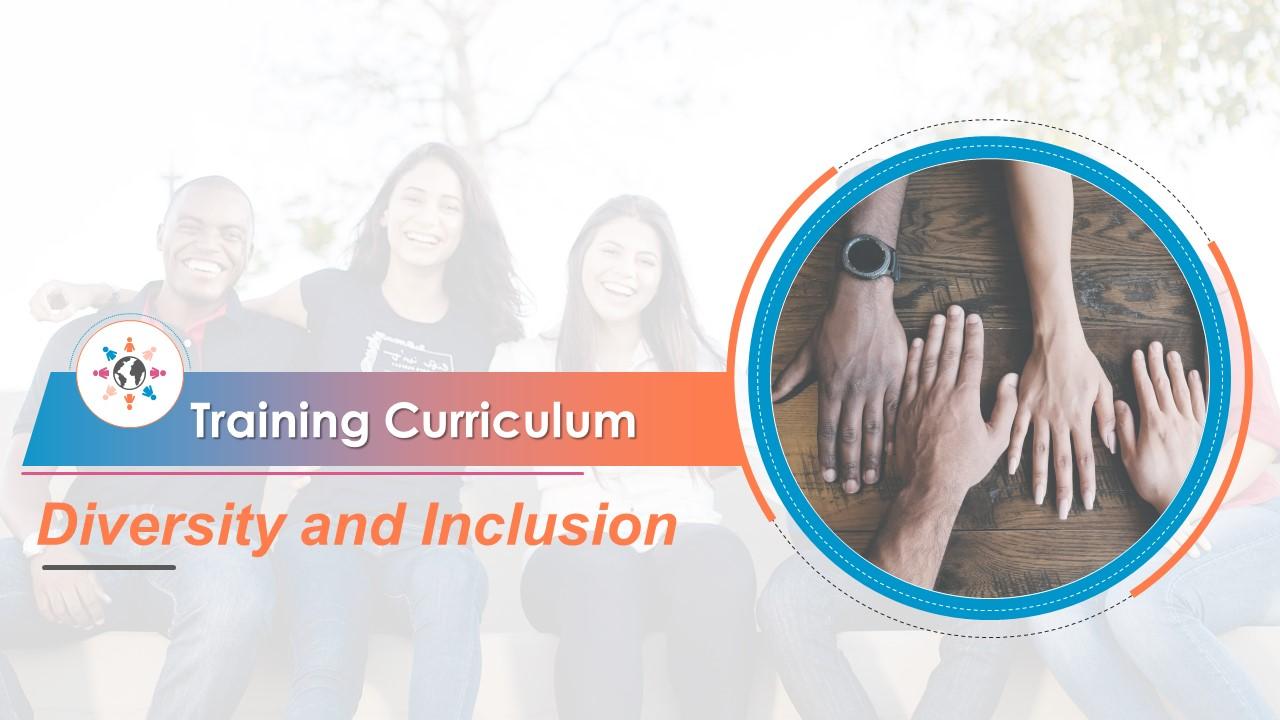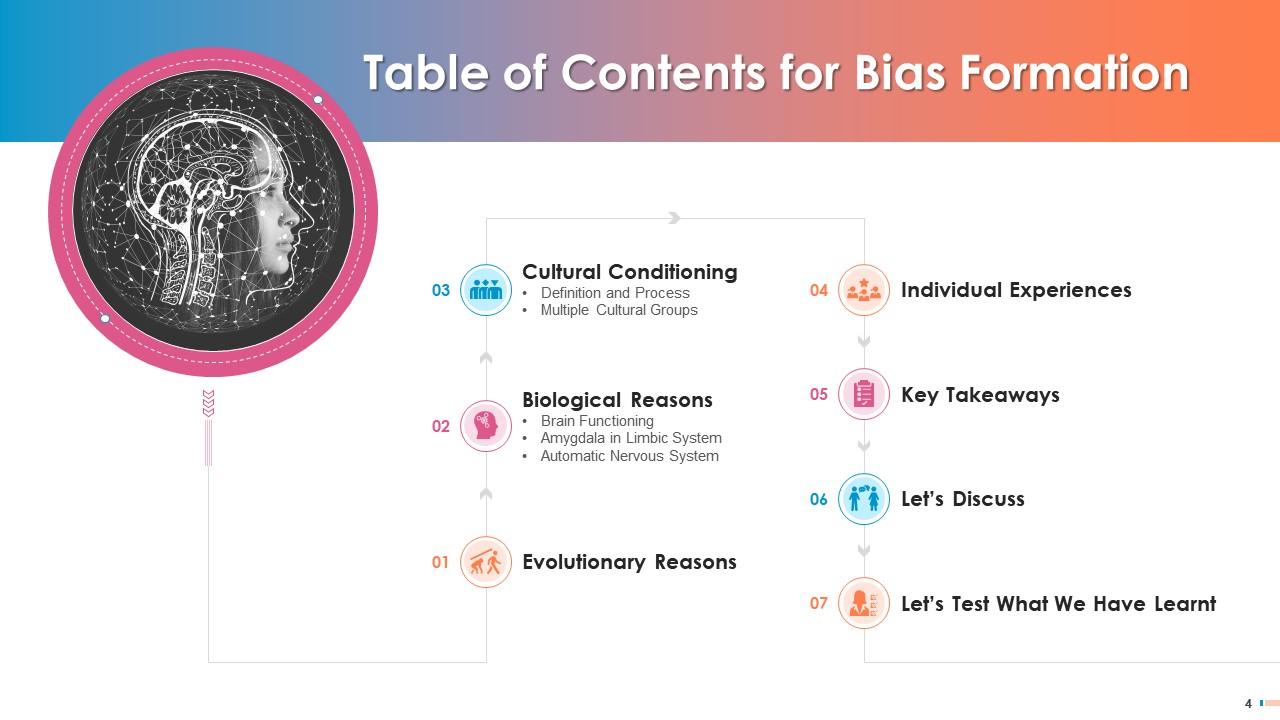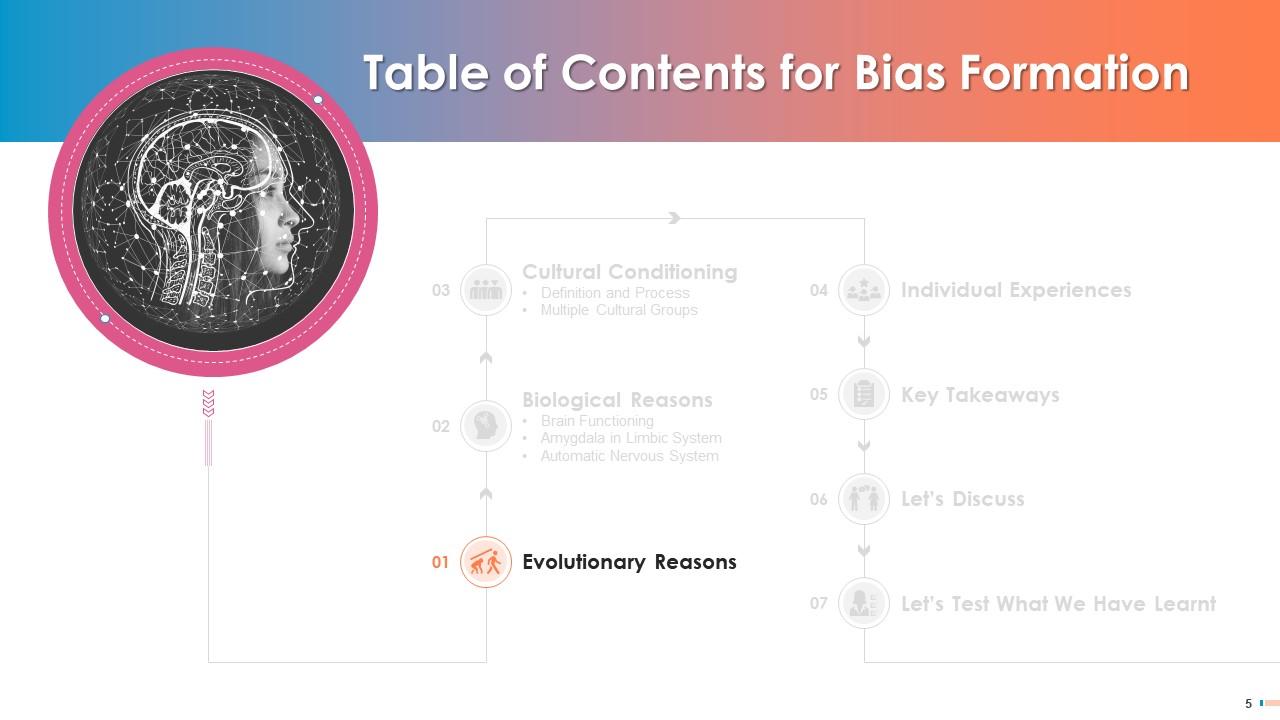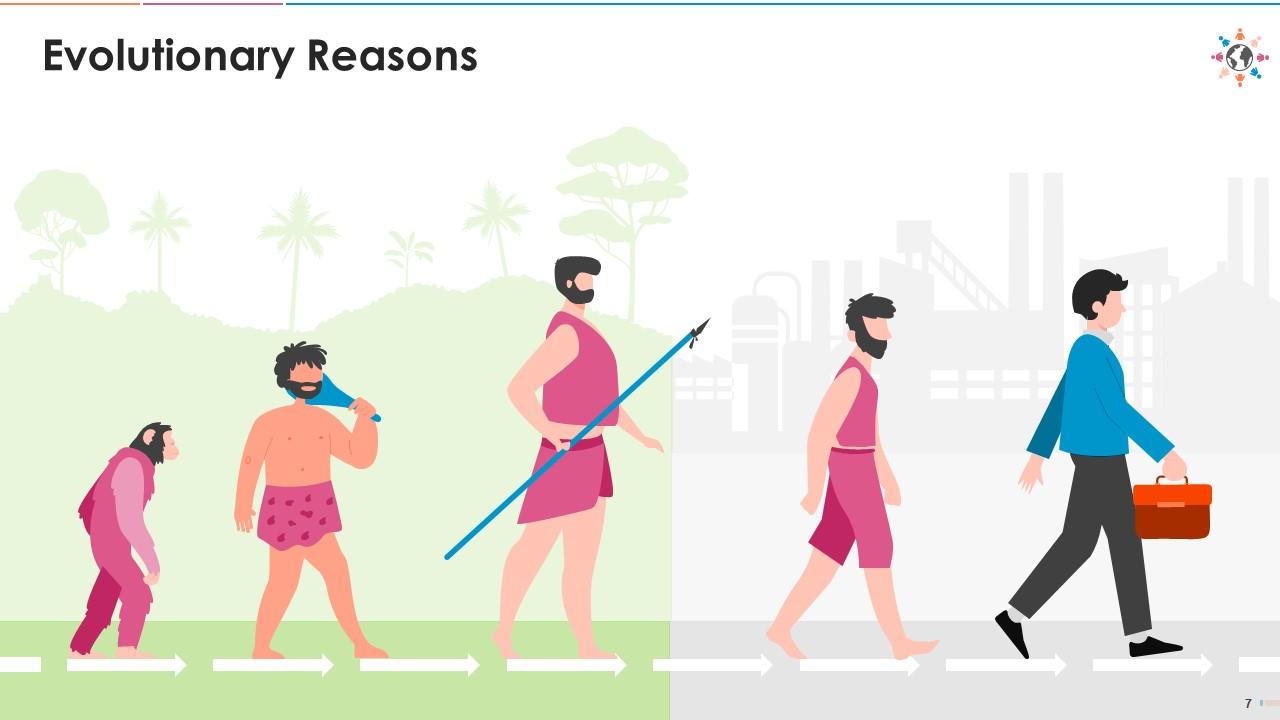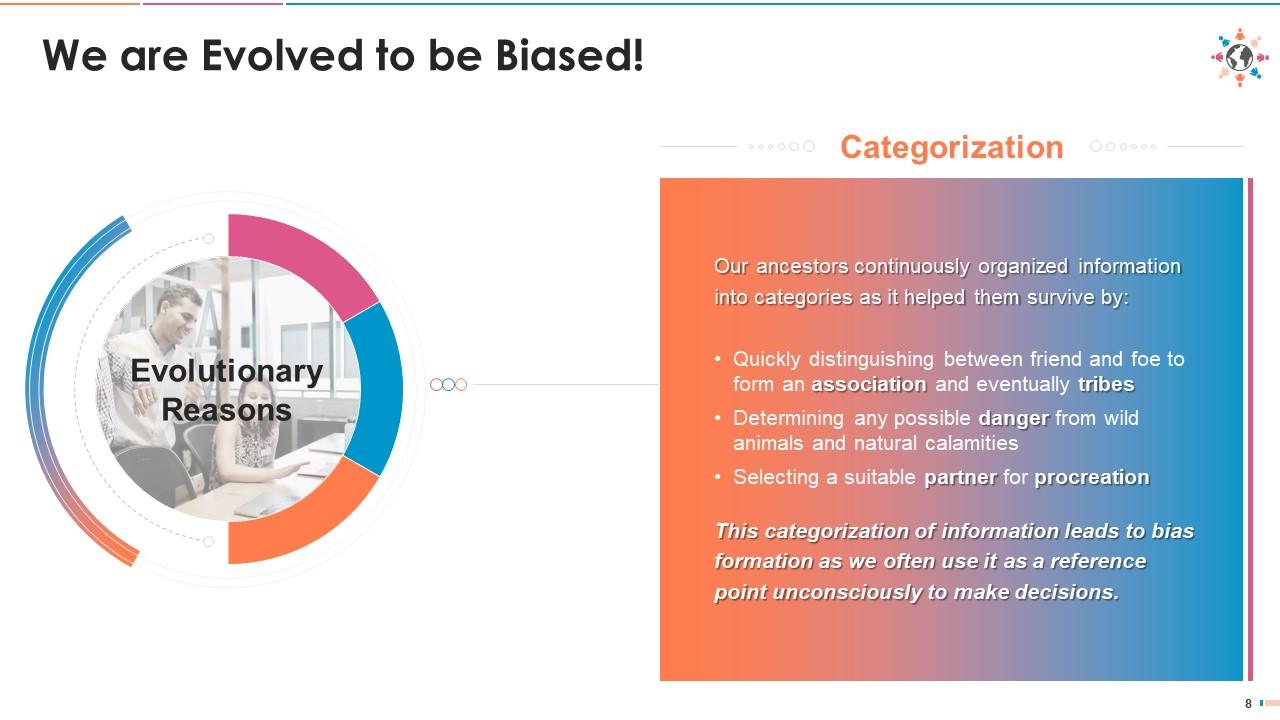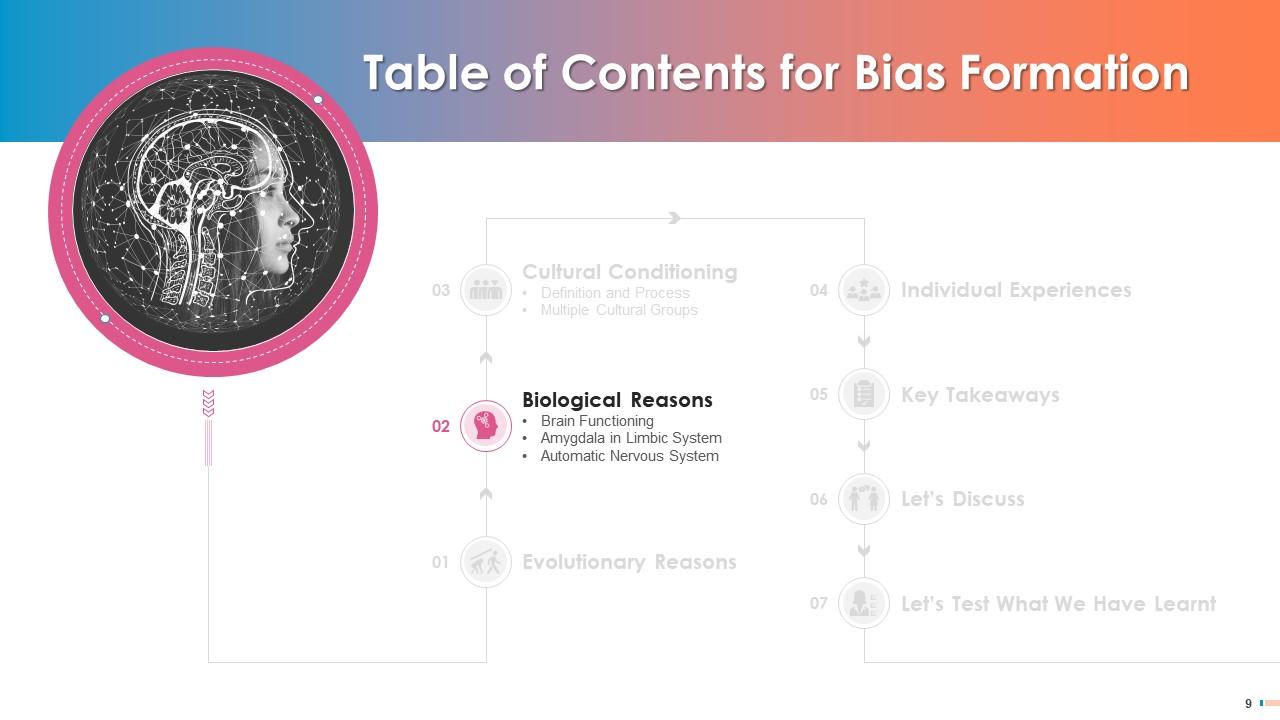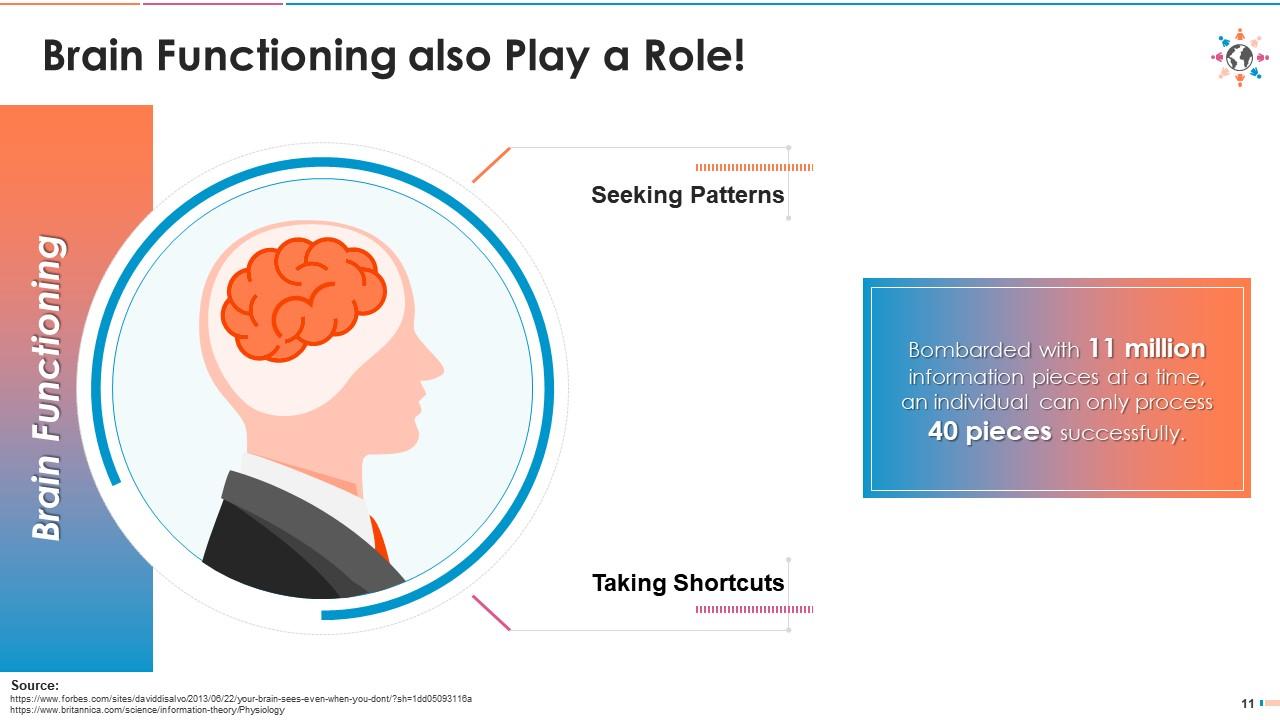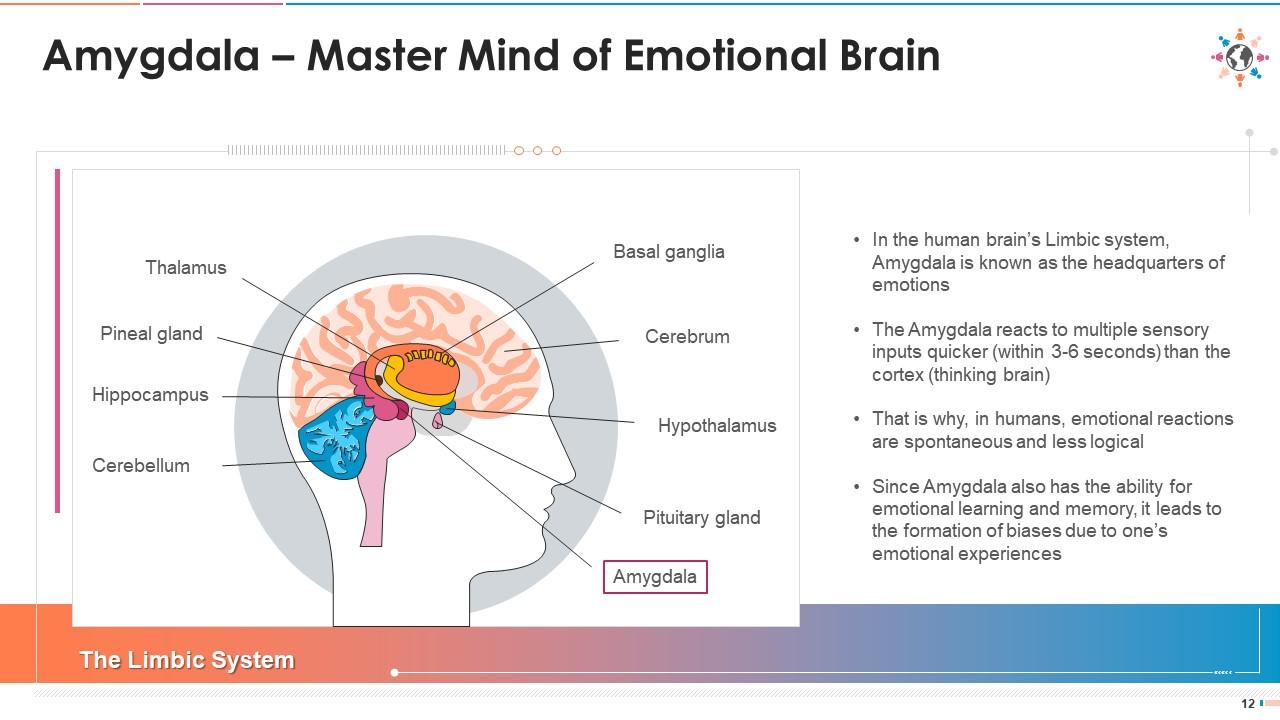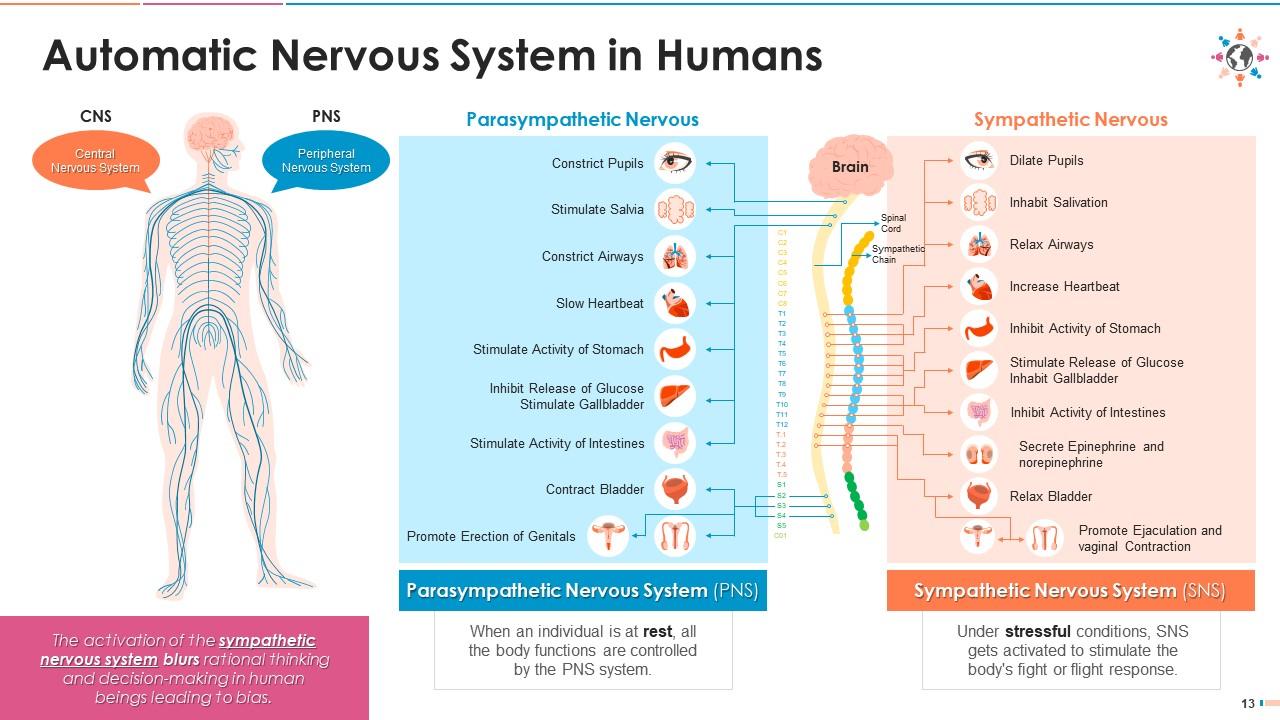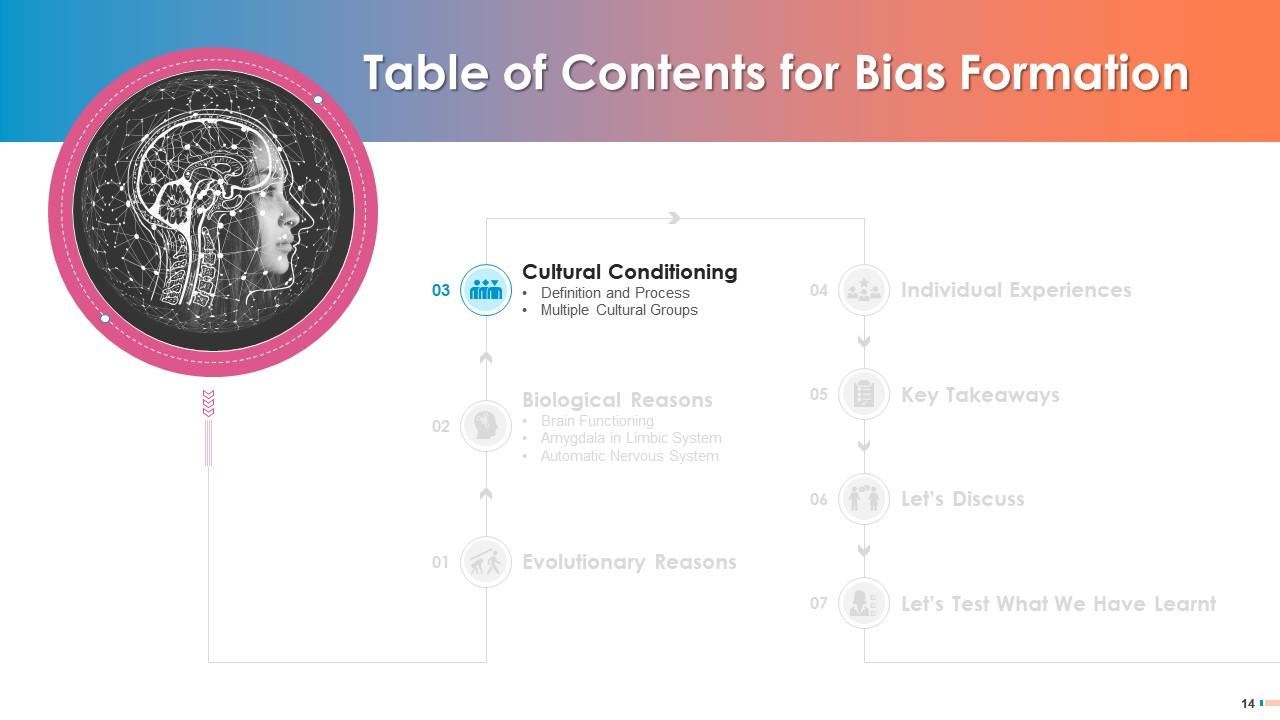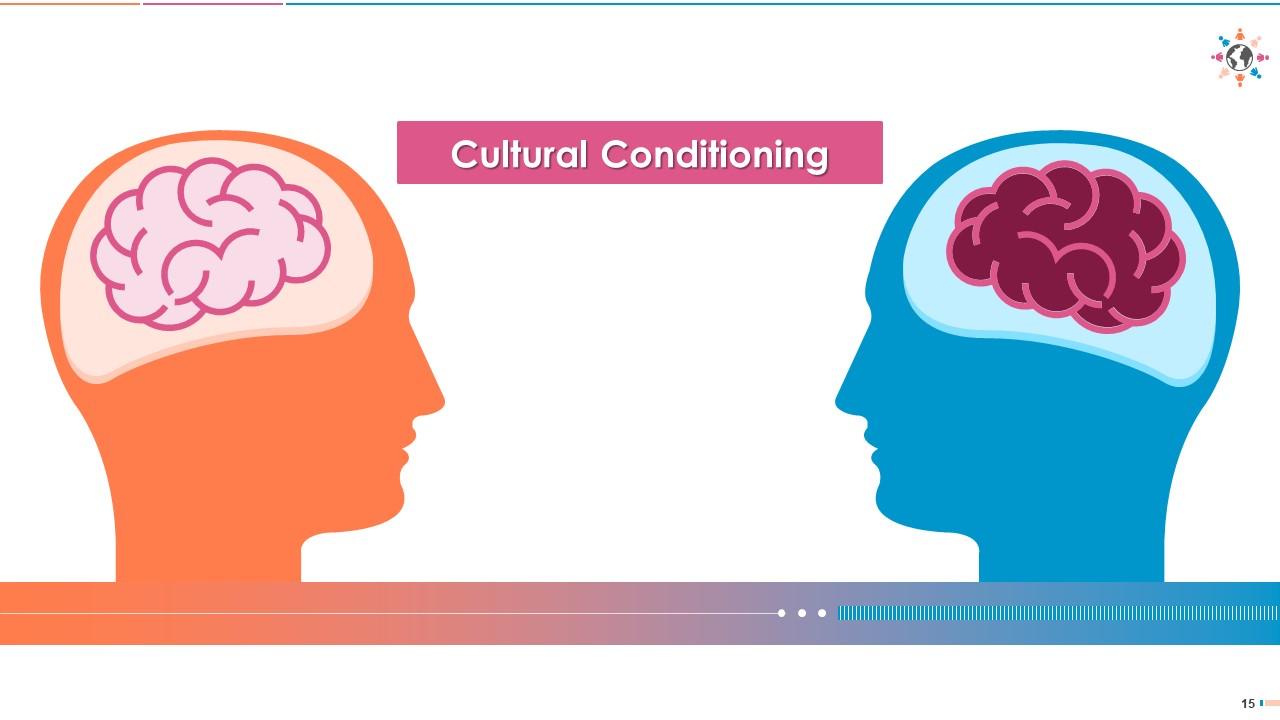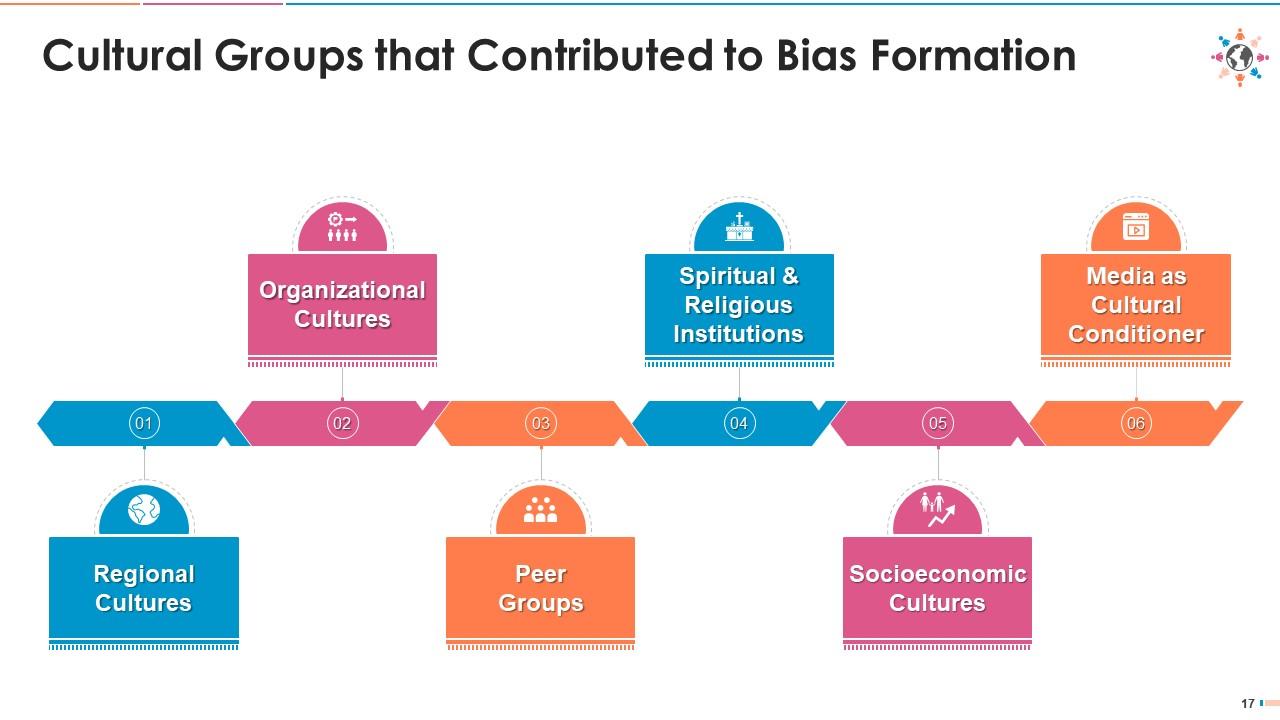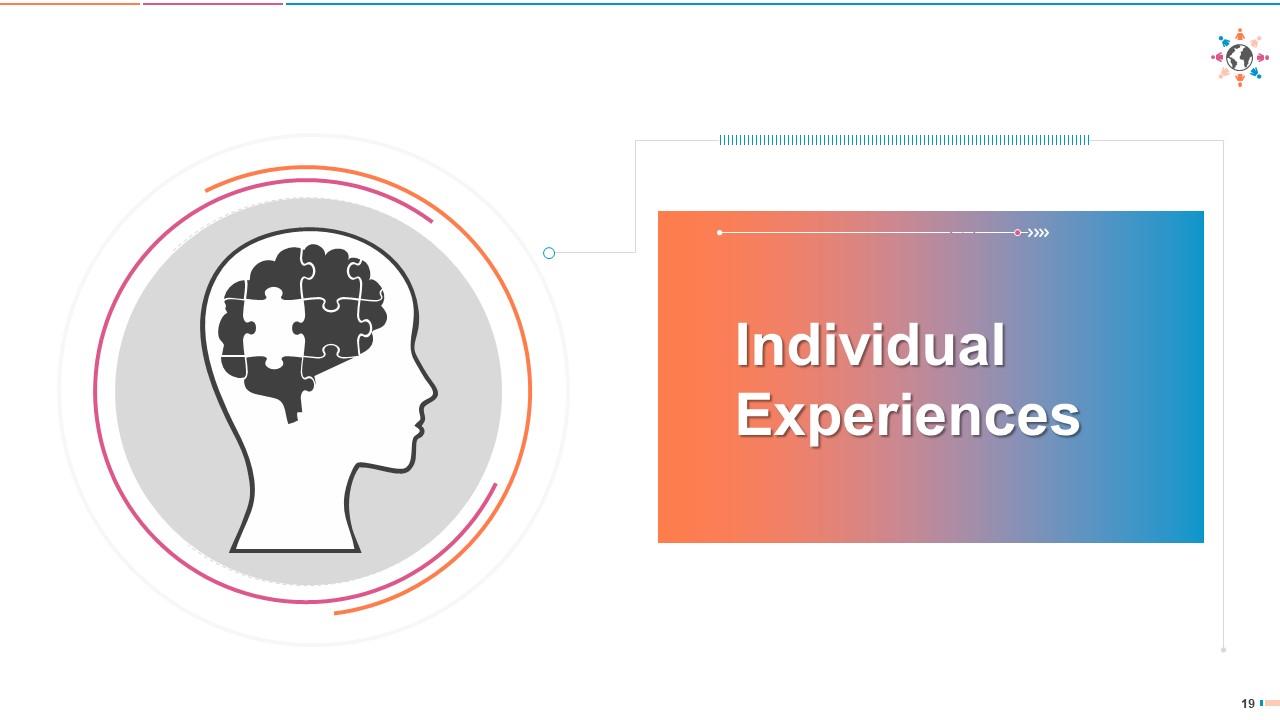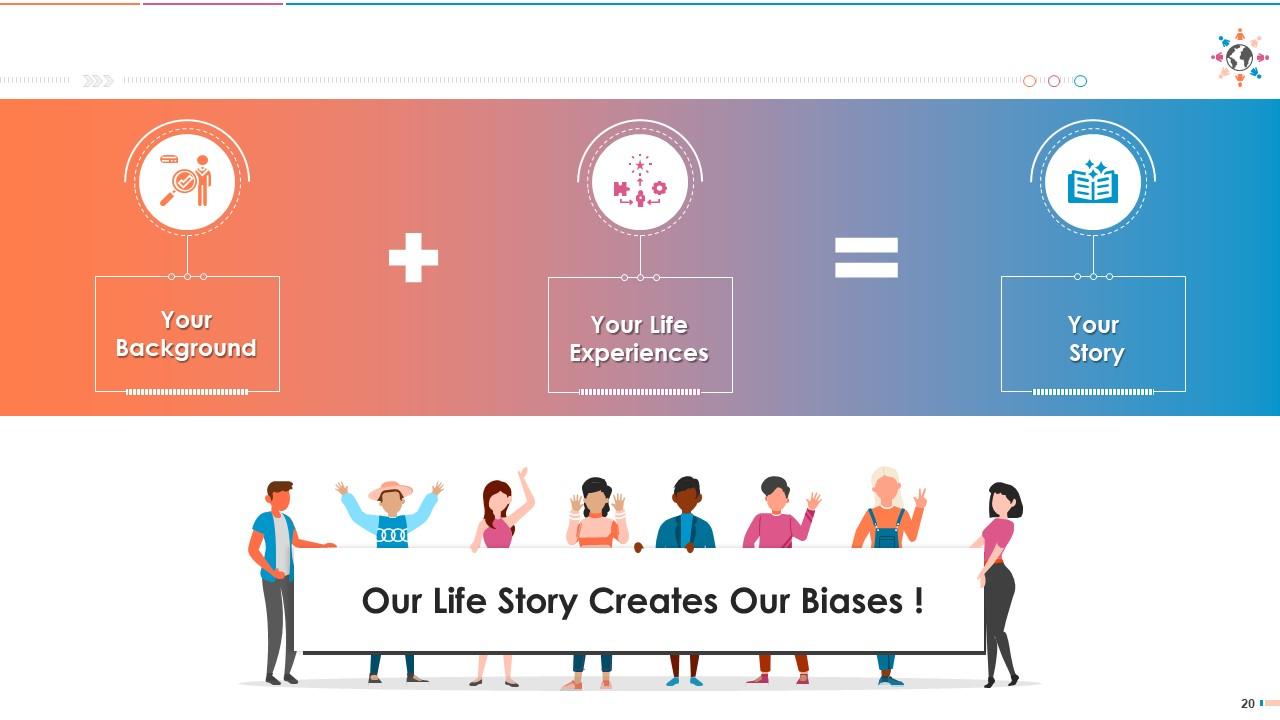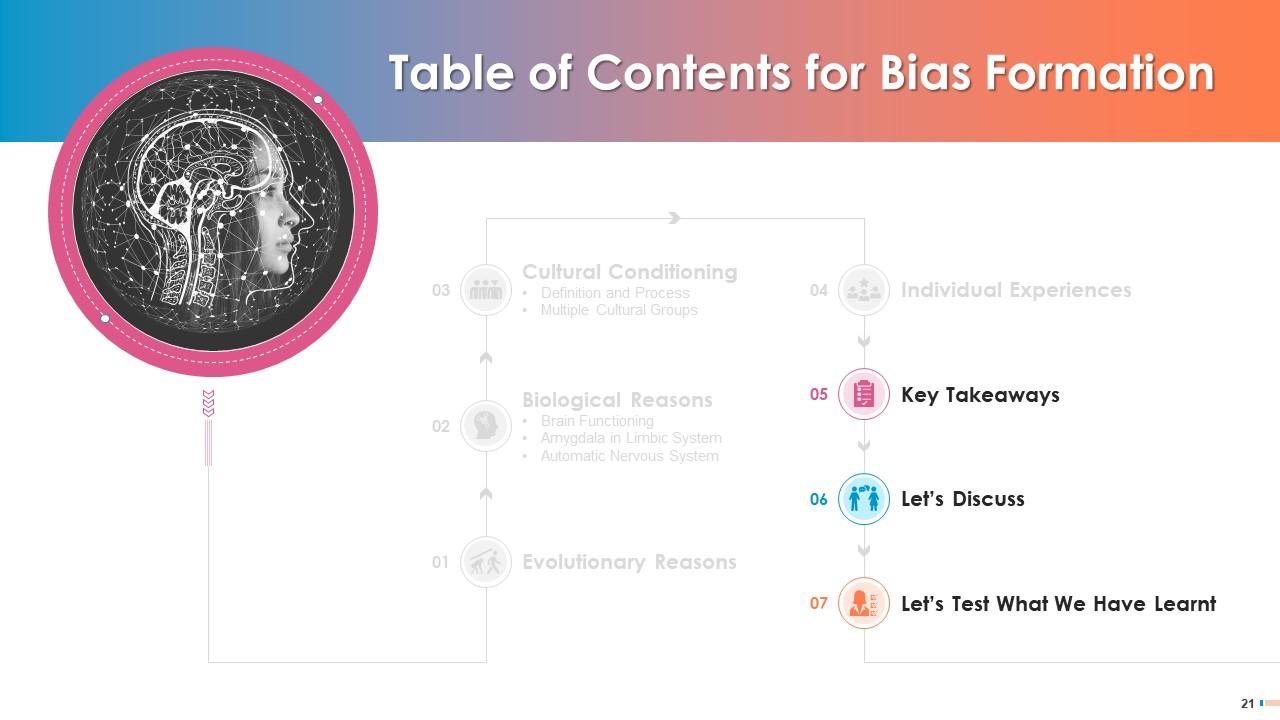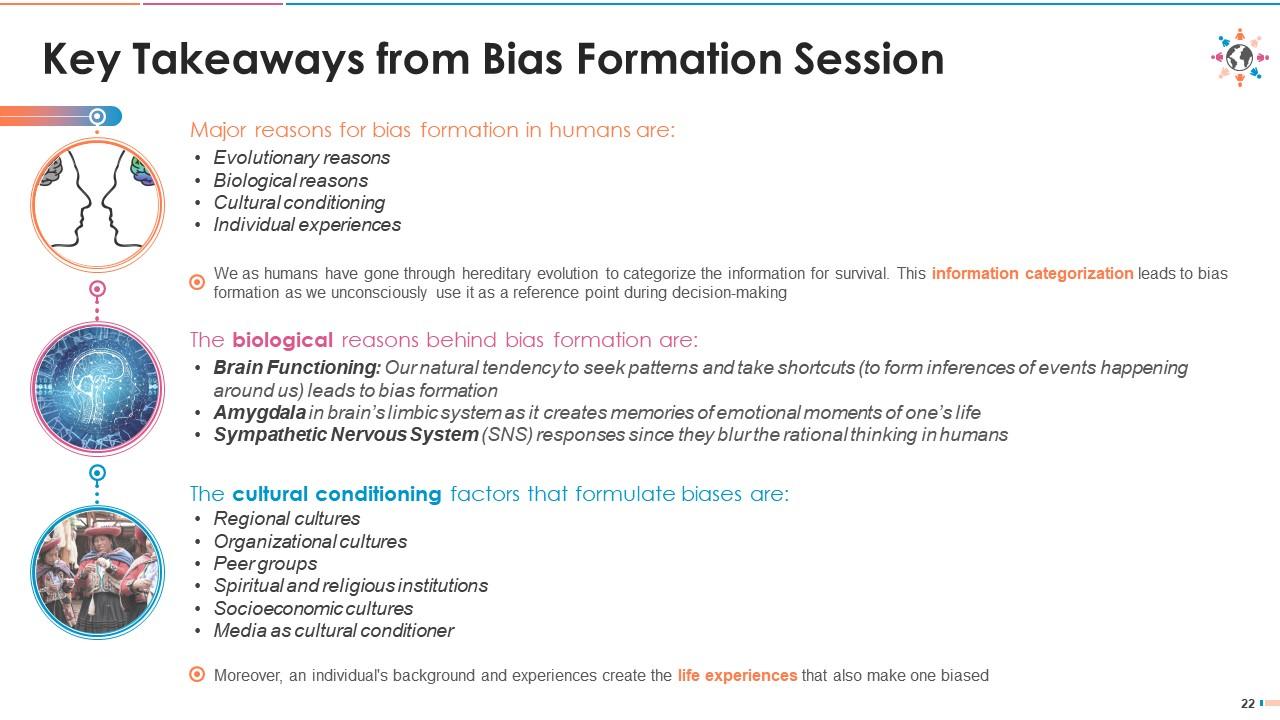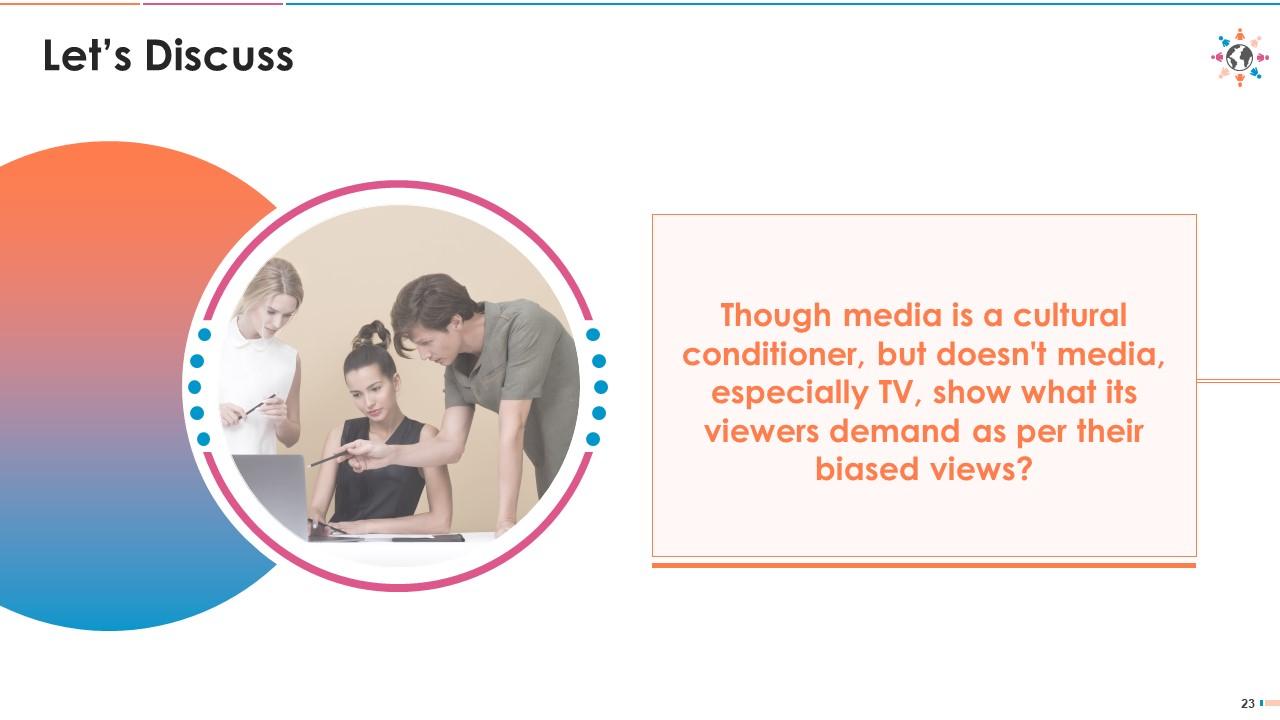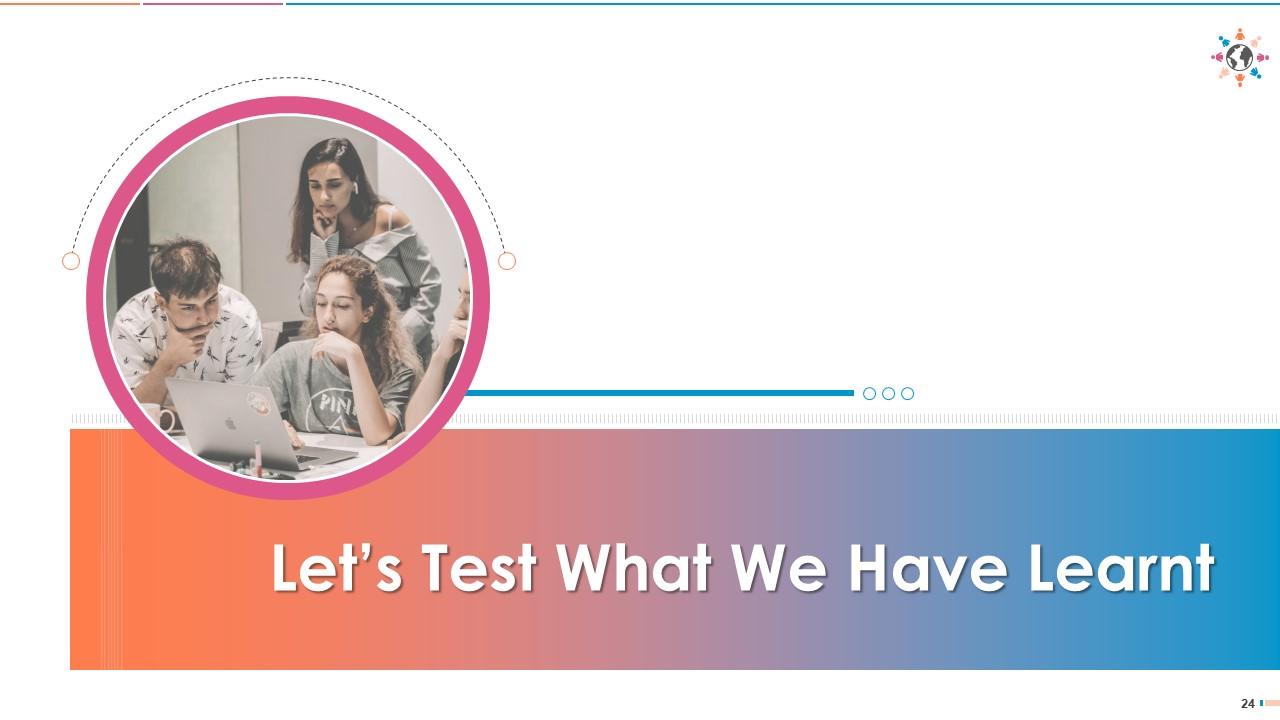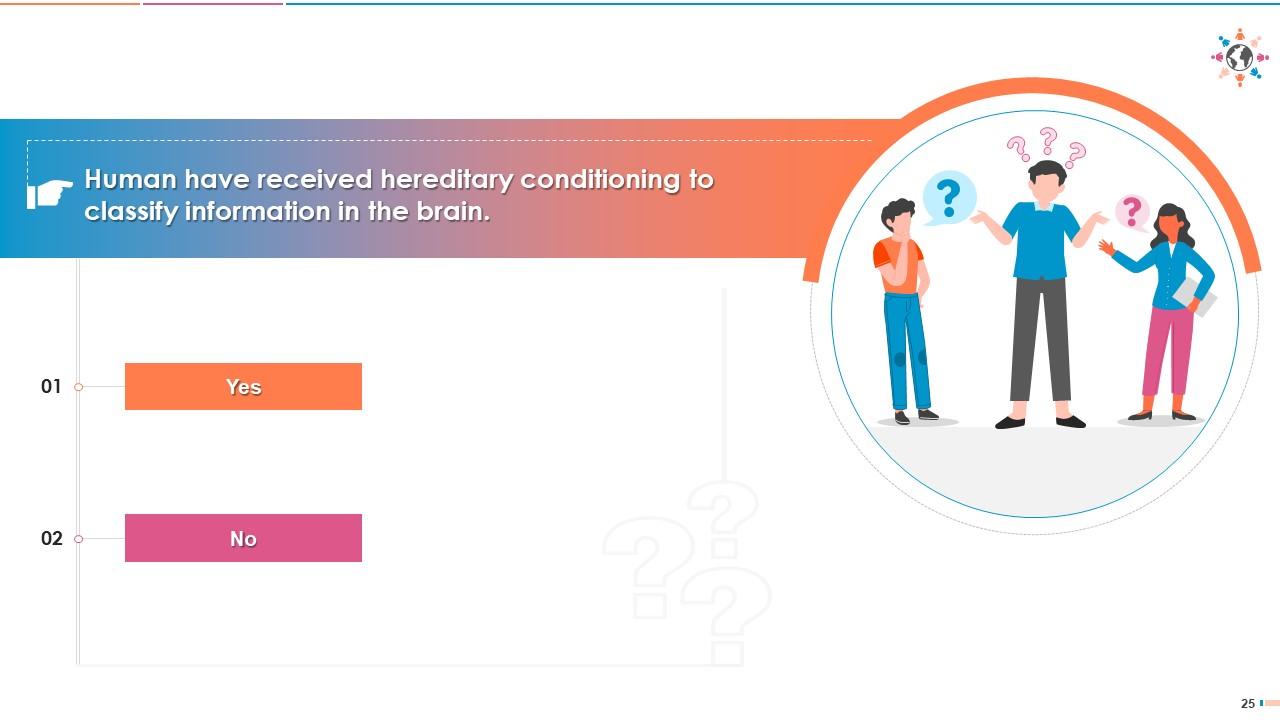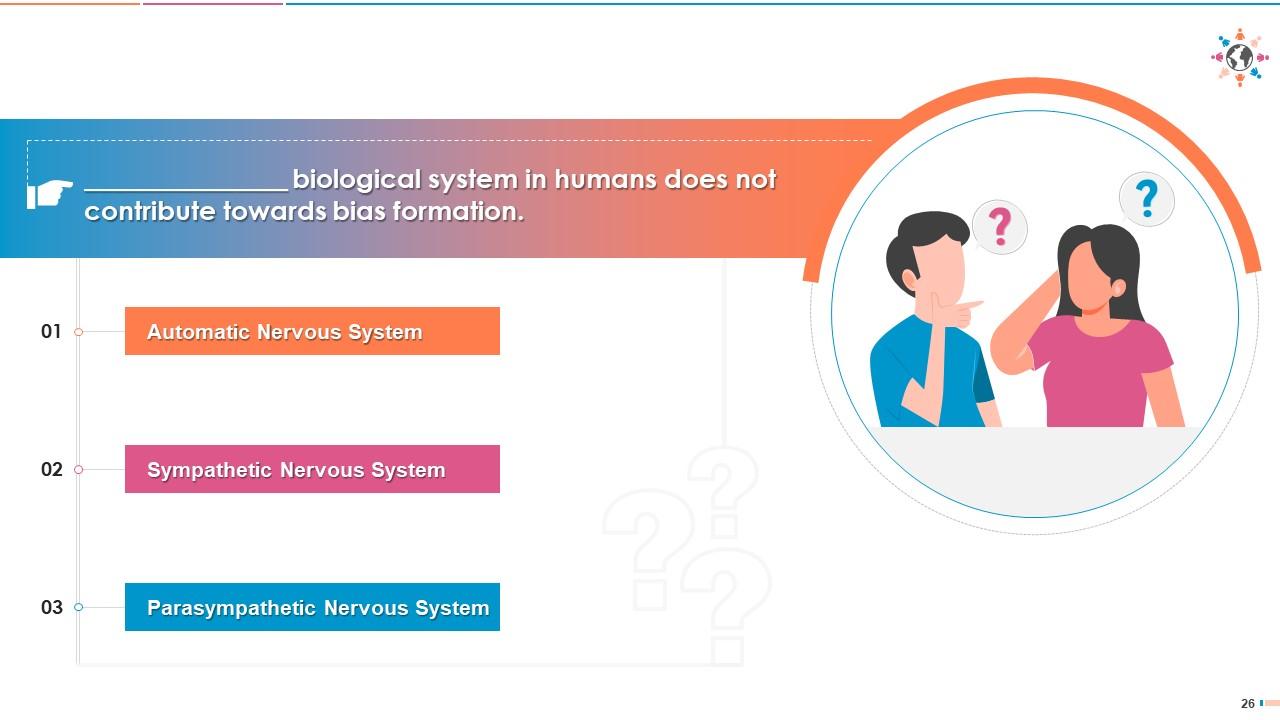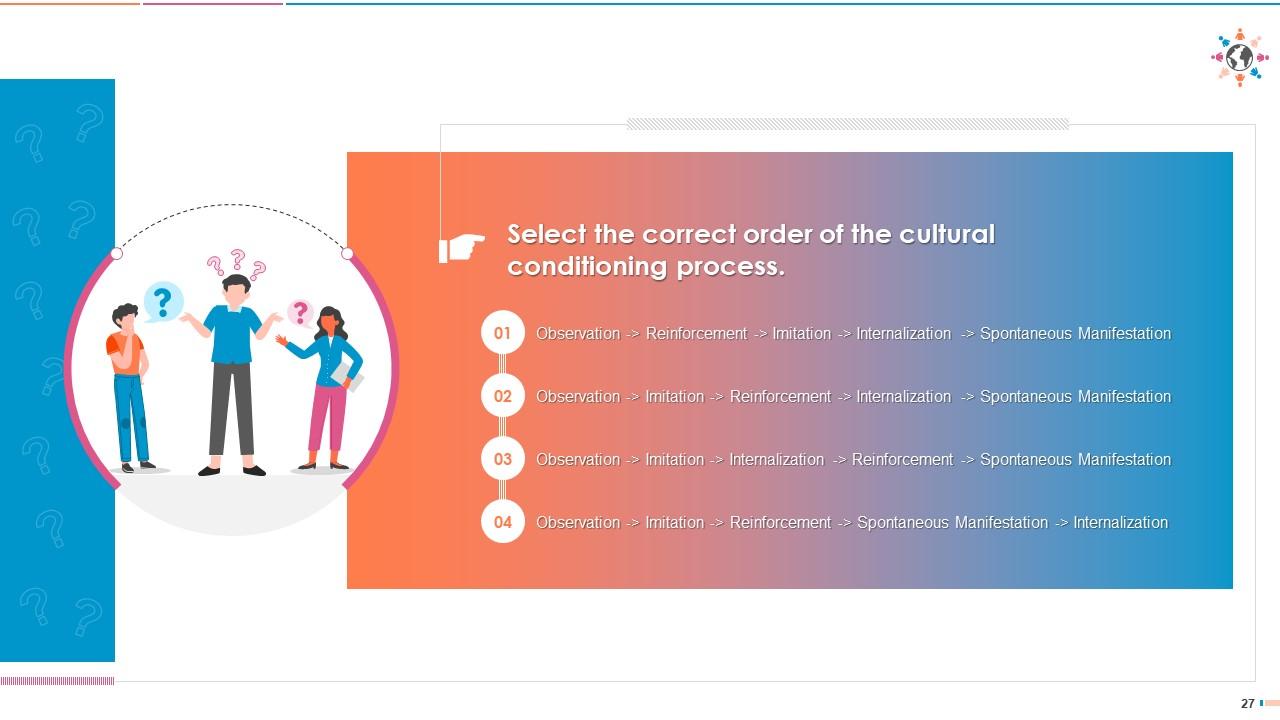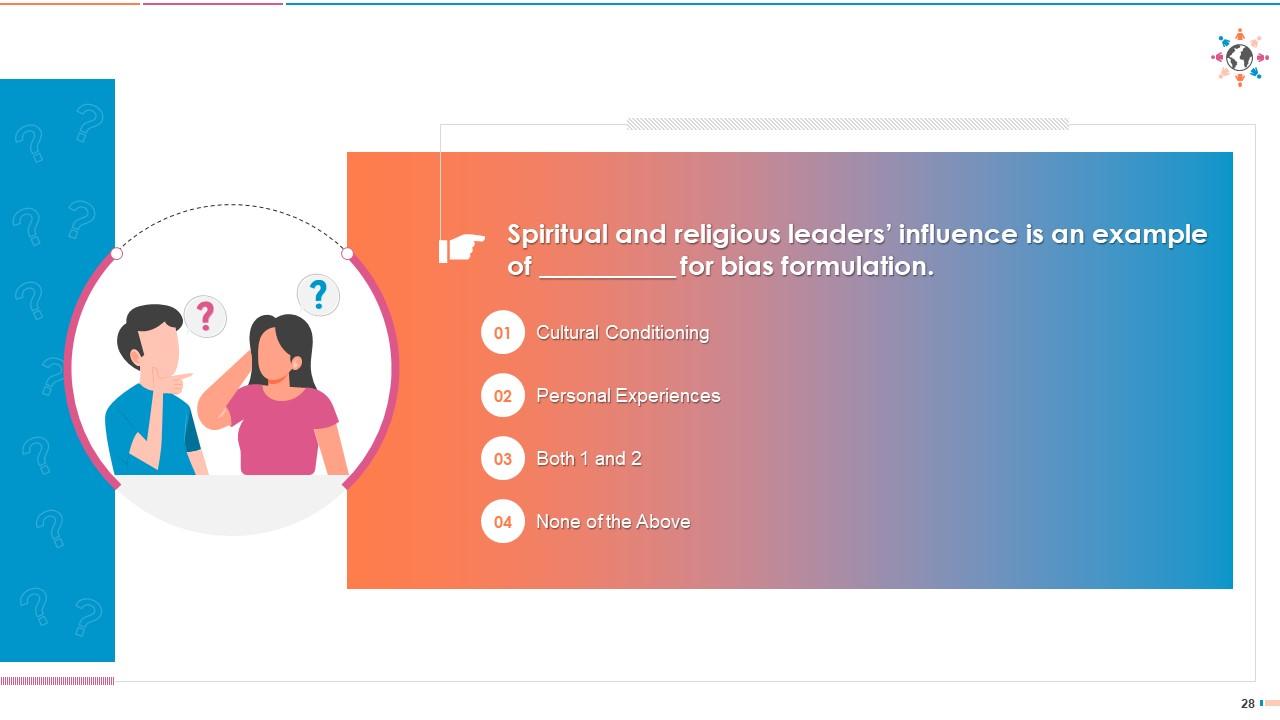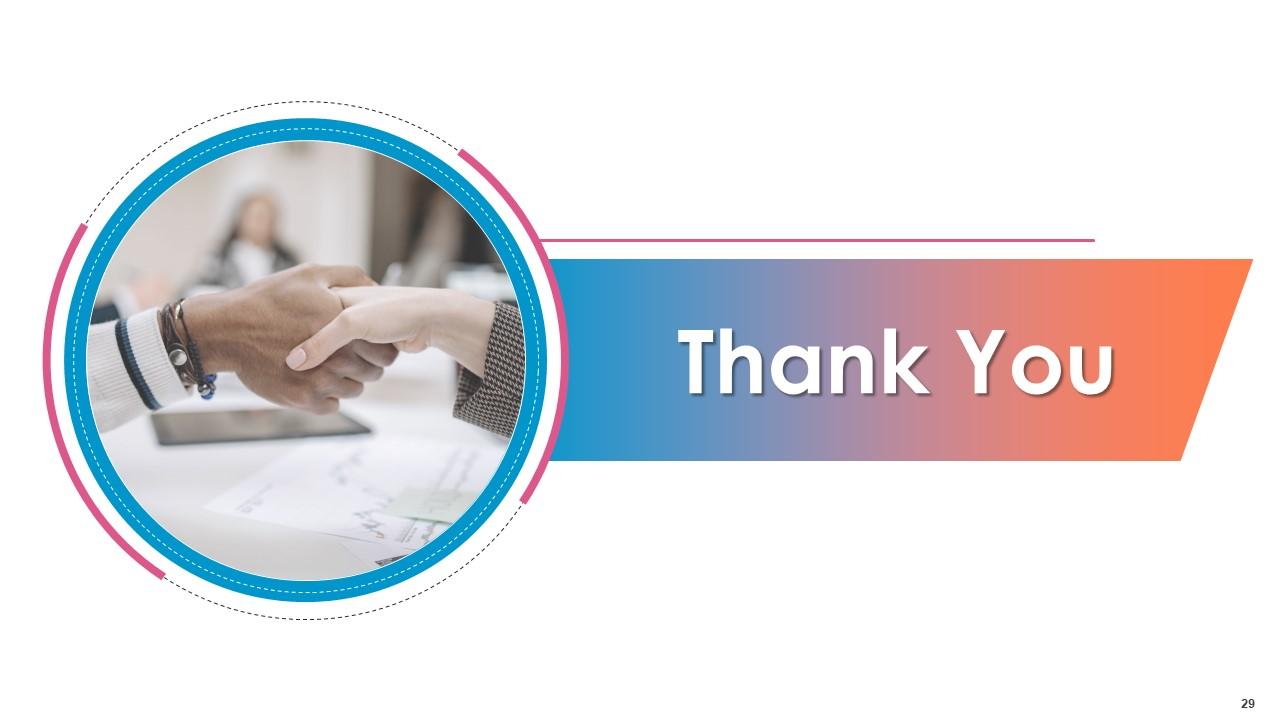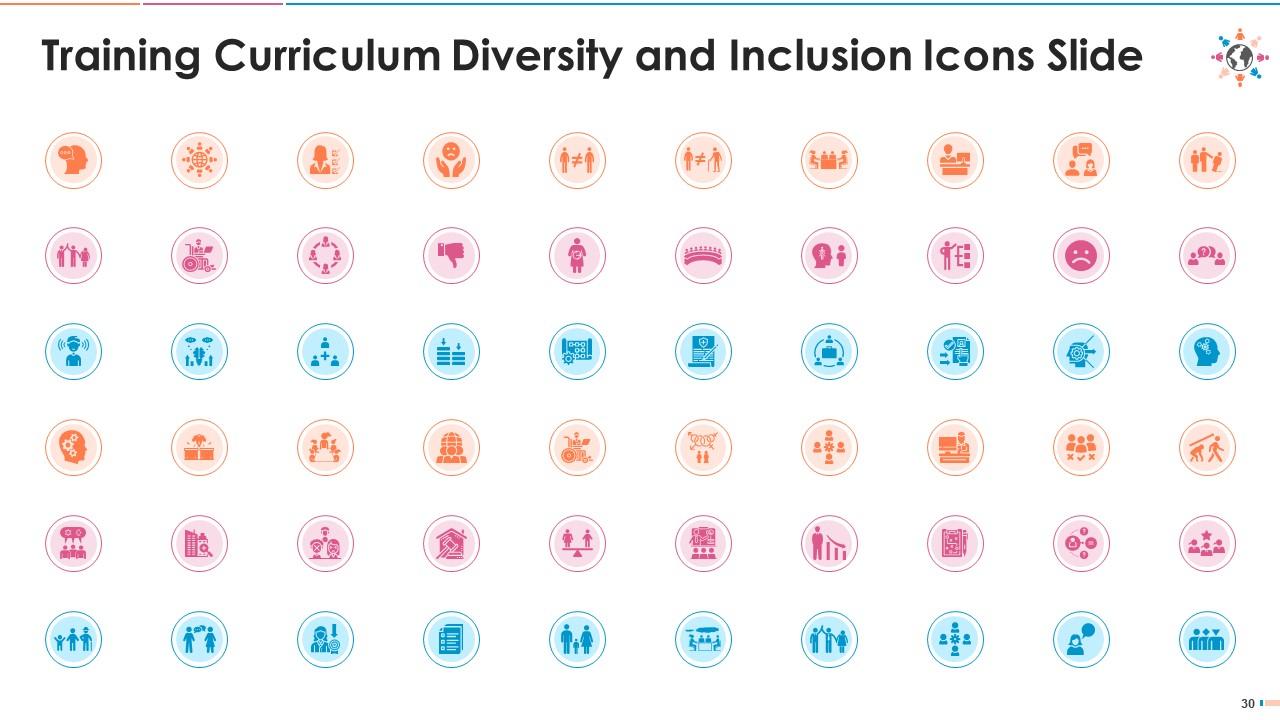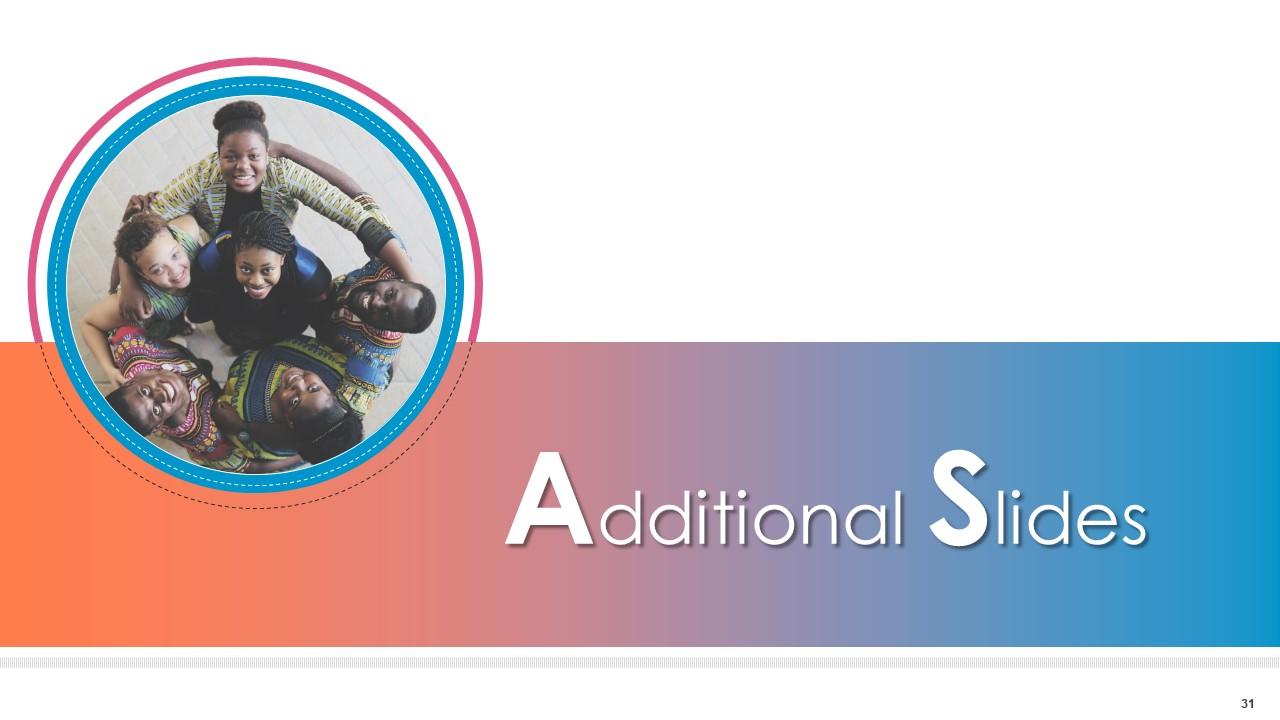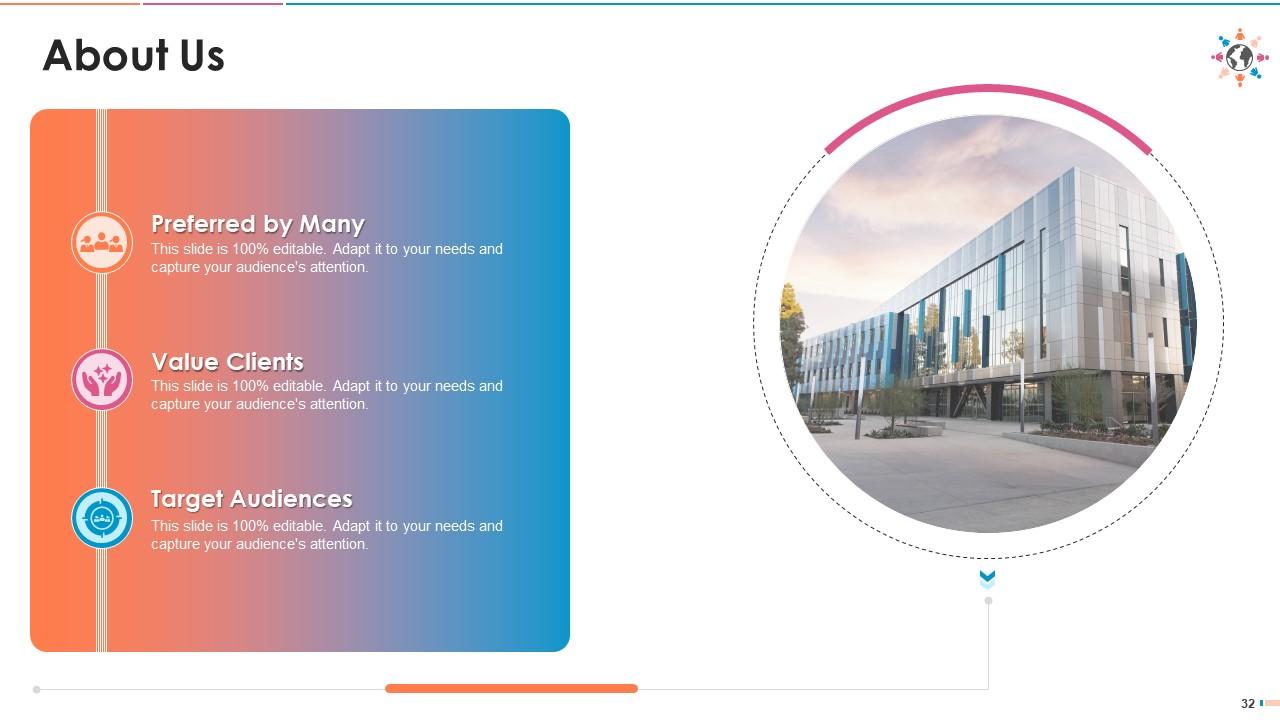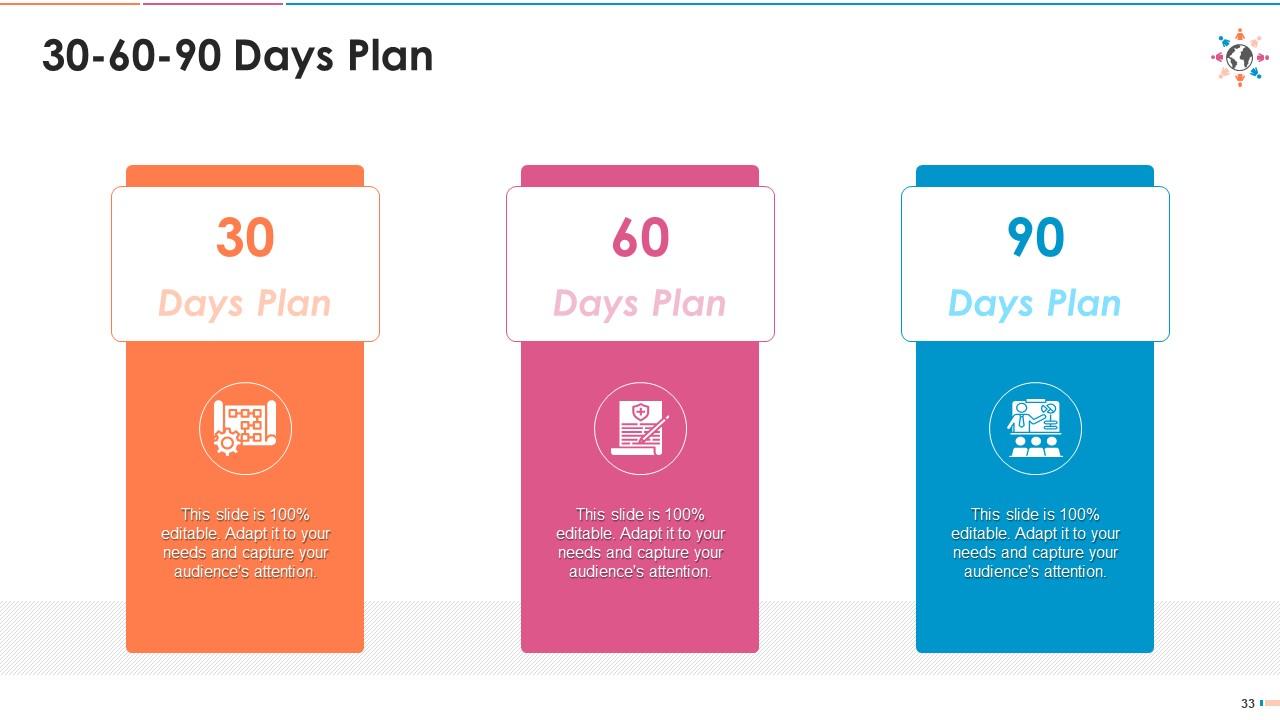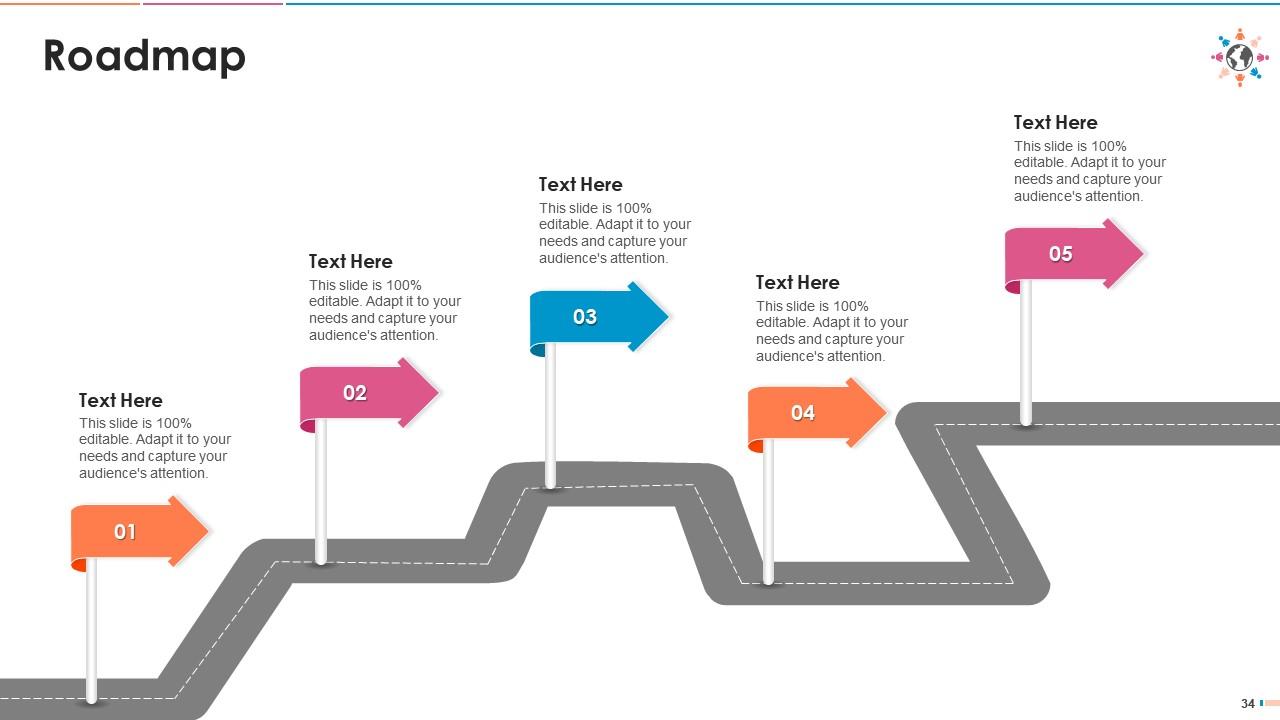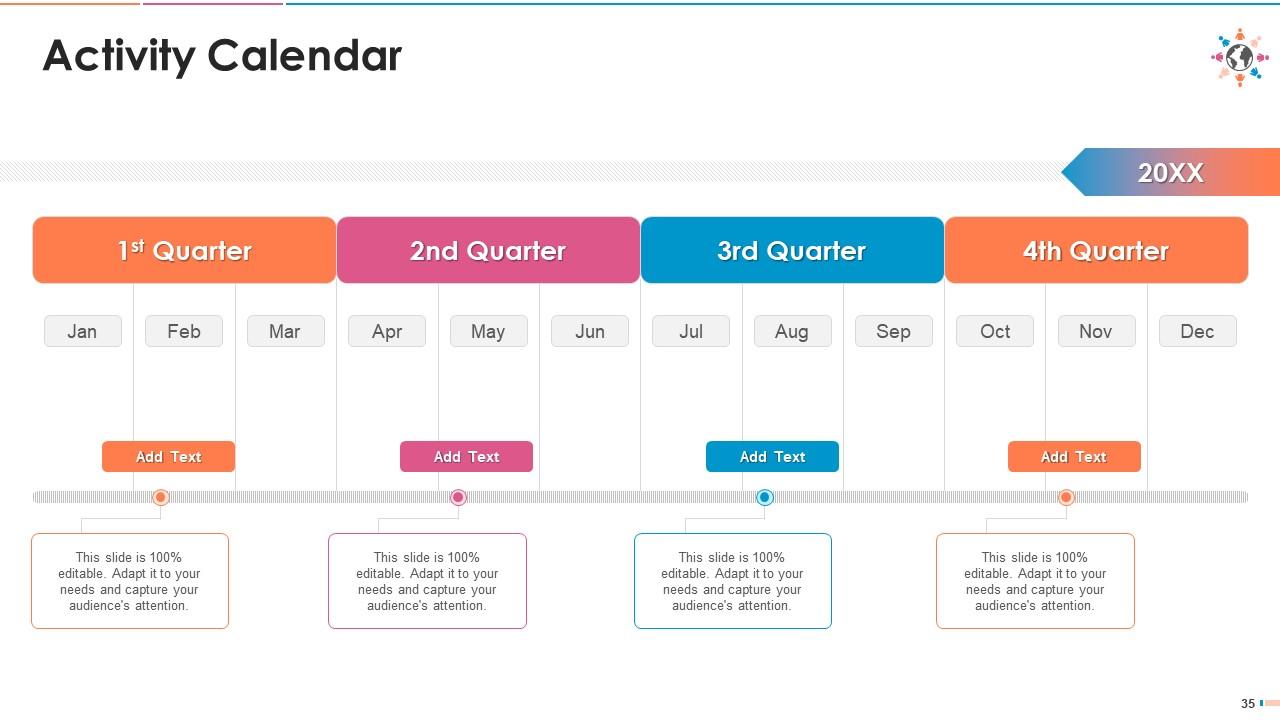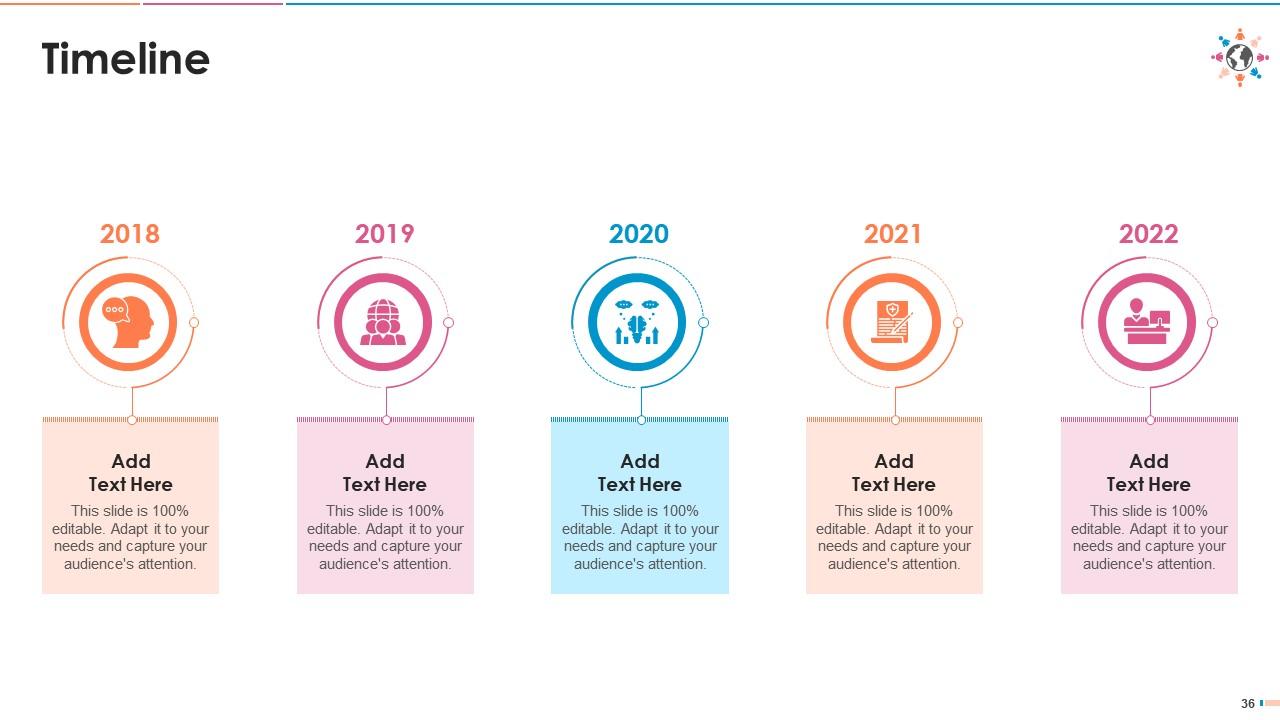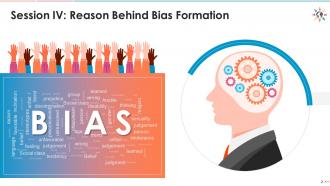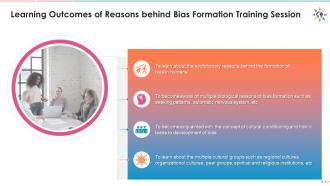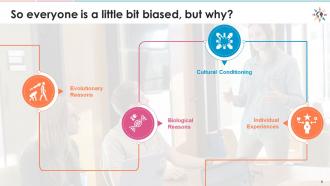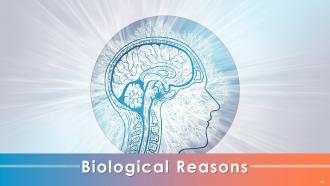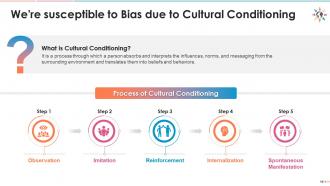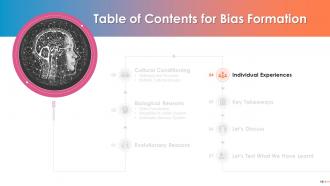Training module on diversity and inclusion reasons behind bias formation edu ppt
While human biases are well acknowledged to be a ubiquitous phenomenon, there is not much awareness about how they are formed and how they can be prevented from impacting our decision making. This training sessions is designed to make the participants aware about reason behind formation of biases viz Evolutionary reasons, biological reasons, Individual Experiences and Cultural Conditioning. It also contains objective type questions to assess the knowledge of the participants. It also contains topics to engage the audience in constructive discussions. This module is designed by experts to deliver a power packed experience to the trainees. Extensive use of graphics, pictures, illustrations and other design elements will add professionalism to your training program. It also contains helpful collaterals like Diversity and inclusion posters, mailers, client proposal template etc.
While human biases are well acknowledged to be a ubiquitous phenomenon, there is not much awareness about how they are form..
- Google Slides is a new FREE Presentation software from Google.
- All our content is 100% compatible with Google Slides.
- Just download our designs, and upload them to Google Slides and they will work automatically.
- Amaze your audience with SlideTeam and Google Slides.
-
Want Changes to This PPT Slide? Check out our Presentation Design Services
- WideScreen Aspect ratio is becoming a very popular format. When you download this product, the downloaded ZIP will contain this product in both standard and widescreen format.
-

- Some older products that we have may only be in standard format, but they can easily be converted to widescreen.
- To do this, please open the SlideTeam product in Powerpoint, and go to
- Design ( On the top bar) -> Page Setup -> and select "On-screen Show (16:9)” in the drop down for "Slides Sized for".
- The slide or theme will change to widescreen, and all graphics will adjust automatically. You can similarly convert our content to any other desired screen aspect ratio.
Compatible With Google Slides

Get This In WideScreen
You must be logged in to download this presentation.
PowerPoint presentation slides
Presenting business plan executive summary PowerPoint presentation slides. This deck comprises of 25 slides. Each slide is well crafted and designed by our PowerPoint experts. This PPT presentation is thoroughly researched by the experts and every slide consists of an appropriate content. All slides are customizable. You can add or delete the content as per your need. Not just this, you can also make the required changes in the charts and graphs. Download this professionally designed business plan executive summary presentation, add your content and present it with confidence.
People who downloaded this PowerPoint presentation also viewed the following :
Content of this Powerpoint Presentation
Slide 3
The slide showcases the multiple learning objectives of the “reasons behind the bias formation” session of the D&I training module.
Slide 6
This slide provides information regarding the major reasons for human biases formation, such as evolutionary, biological, cultural, conditioning, individual experiences.
Slide 8
This slide provides information regarding the evolutionary reasons behind the formation of bias in humans.
Slide 11
This slide provides information regarding the biological reasons behind the formation of bias in humans such as brain functioning that involves seeking patterns and taking shortcuts.
Instructor’s Notes:
- Brain Functioning:
- Seeking Patterns: Bias occurs because the human brain is conditioned to seek the pattern, to form inferences of events happening around them
- Taking Shortcuts: Also, as the human brain has a limited capacity to process all the information it is bombarded with, it forms the mental shortcuts to make it quicker and easier to process the input information effectively
Slide 12
The slide provides information regarding the limbic system of the human brain. It also contains details regarding the working of the Amygdala, which leads to bias formation.
Instructor’s Notes:
- Limbic System: It is the part of the brain that primarily deals with the following three functions:
- Emotions
- Memories
- Arousal
- Amygdala: It is made of two almond-shaped structures in the limbic system. Its major functions are:
- Memory development of emotional and emergency events
- Retaining developed memories for future reference
- Preparing the body to deal with the emergency
Slide 13
This slide provides information regarding the parasympathetic nervous system and sympathetic nervous system in humans. It also covers details regarding the functions of PNS and responses of SNS in the human automatic nervous system.
Instructor’s Notes:
- Automatic Nervous System: It is a control system which acts unconsciously and regulates bodily functions, such as the heart rate, digestion, respiratory rate, pupillary response, urination, and sexual arousal
- Parasympathetic Nervous System (PNS) Functions:
- Salivation: Production of saliva to digest food
- Lacrimation: Making tears to lubricate and preserve eye tissues
- Urination: Contraction of bladder to ensure that urine comes out of body
- Digestion: Stimulates release of saliva
- Defecation: Contraction of intestine muscles (sphincter) to push digestive food to digestive tract for bowel movement
- Sympathetic Nervous System (SNS) Responses:
- Increase heart rate
- Dilation of the pupils
- Secretion of sweat glands
- Dilated muscles
- Increased alertness
- Slowing down or stopping digestion
- Relaxation of the bladder
Slide 16
This slide provides information regarding the definition of cultural conditioning. It also includes details of the cultural conditioning process in terms of multiple steps such as observation, imitation, reinforcement, internalization, and spontaneous manifestation.
Instructor’s Notes:
The cultural conditioning has the following steps:
- Step 1 Observation: In this stage, an individual is merely observant of the wrongful behaviors of elders around them
- For example: An elder is making derogatory comments about a particular race in front of a teenager
- Step 2 Imitation: In this stage, an individual consciously carries out the same actions as observed earlier around him
- For example: The same teenager starts making derogatory comments on a classmate of a different race
- Step 3 Reinforcement: Now, this conscious bias behavior is further validated and encouraged by family members, friends, and colleagues
- For example: Teenager posts derogatory racist statement online, and his/her friends like and share it
- Step 4 Internalization: Over a period of time, conscious bias behavior becomes rigid due to the influence of media, propaganda of leaders, etc.
- Step 5 Spontaneous Manifestation: Eventually, it leads to the formation of unconscious bias in the individuals
Slide 17
The purpose of this slide is to provide information regarding the cultural groups which influence the beliefs and behaviors of an individual, such as regional cultures, organizational cultures, peer groups, spiritual and religious institutions, socioeconomic cultures, and media.
Instructor’s Notes:
The major cultural groups that influence an individual's beliefs and behaviors:
- Regional Cultures: Norms and values of neighborhoods, cities, states, and countries one is living in affects the person’s biases
- For example: For example: People living in North America are skeptical about trusting individuals from countries that are culturally dissimilar
- Organizational Cultures: Authoritative figures in family, educational institutes, and workplaces perceive how an individual perceives the world
- For example: If one's immediate boss is homophobic, one might unconsciously start judging homosexual people
- Peer Groups: Friends, colleagues, and people with similar hobbies also influence one's biases
- Spiritual and Religious Institutions: Spiritual and religious leaders influence one's moral and ethical systems, eventually leading to a bias against other religions
- Socioeconomic Cultures: A person's economic class also contributes towards bias formation
- For example: An individual brought up in a high-class society might see others from the lower social class as less capable
- Media as Cultural Conditioner: Media as a cultural conditioner also play a significant role in formulating biases
- For example: Channels showing anti-immigrant news create a perception that immigrants are bad for the country. Thus, making their audience also anti-immigrant
Slide 20
The purpose of this slide is to showcase that an individual’s background and life experiences create his story that eventually develops their biases.
Instructor’s Notes:
- An individual’s background and life experiences also shape their preferences towards or against something, leading to bias formation
- Mostly one has a favorable bias towards people with similar characteristics in terms of race, gender, culture, etc., and vice versa
Slide 22
This slide depicts the summary of the stereotypes prejudice discrimination session. It also contains information regarding the negative consequences of workplace discrimination.
Training module on diversity and inclusion reasons behind bias formation edu ppt with all 36 slides:
Use our Training Module On Diversity And Inclusion Reasons Behind Bias Formation Edu Ppt to effectively help you save your valuable time. They are readymade to fit into any presentation structure.
-
Best Representation of topics, really appreciable.


